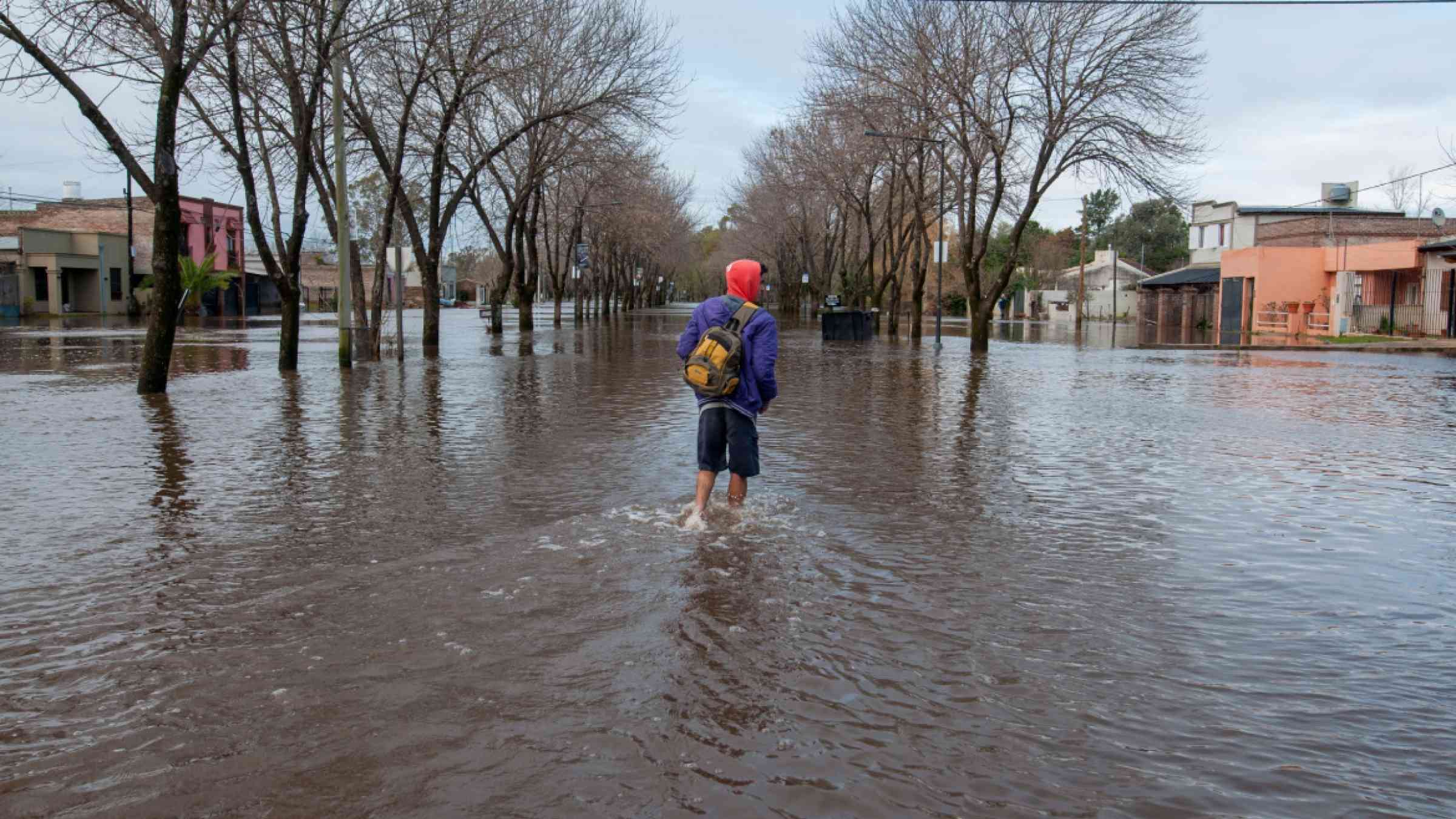Keeping it fair: How to account for inequity in climate and disaster risk analyses

Incorporating social inequalities into climate risk analyses offers a more just consideration of the vulnerabilities of different communities.
As the global community grapples with the escalating challenges of climate change, it is becoming increasingly clear that its impacts are not uniformly distributed. Climate change and associated natural hazards cause disparate impacts amongst different groups in society.
Often, these impacts are the result of underlying social inequalities. Despite this, conventional climate and disaster risk analyses that aim to inform climate adaptation and disaster risk reduction strategies do not account for these underlying social inequalities.
An increasing number of studies have proposed methods to consider various social inequalities and how they drive risk, but a significant gap remains in practice.
A recent study conducted by researchers from Nanyang Technological University in Singapore, and the University of Toronto revealed that only 28% of 69 risk assessments by international development organizations incorporated at least a mention of different risks to different social groups.
The lack of integration of social inequalities in risk analyses has two main consequences. Firstly, risk and loss outputs are often quantified and reported in an aggregate manner, such as at the national level or for an entire catastrophe event, obscuring the specific groups which might bear disproportionate impact.
Secondly, when they overlook the social factors that can either lessen or worsen the effects of disasters and climate change, they fail to create plans that address the specific social, environmental, and economic situations affecting the resilience of communities and individuals.
Understanding the unique risk profiles of individuals, households and communities is crucial, especially in Asia and the Pacific, where social inequalities remain deep-rooted and millions are exposed to multiple natural hazards.
The substantial risks already present are magnified by climate change. This includes increasing frequency and severity of tropical cyclones, floods, droughts and other events.
Risk assessments form powerful tools to improve adaptation and protection efforts. However, typical metrics used in conventional risk assessments only account for losses amounting to the value of the assets at risk, not of asset losses.
To more accurately assess the unequal impacts of climate and disaster risk on different communities, it is vital to disaggregate the data on risks and losses, delineating them across various social groups.
Disaggregation can be considered across both exposure and vulnerability. Disaggregation by exposure, for example, quantifies how many individuals within a specific social segment, such as the elderly, face potential hazards, such as residing in a flood-prone area.
However, results from differentiated exposure alone are insufficient to capture the full scope of risk disparity. For instance, while both young adults and the elderly may have similar exposure to floods, the elderly may bear a higher vulnerability to injuries and death.
By disaggregating data to reflect such vulnerabilities—examining fatality rates across age groups for instance—we gain better understanding of risks that different segments endure. Importantly, this opens up a broader spectrum of policies and interventions tailored to address specific vulnerabilities and needs.
Beyond disaggregation, risk analyses should account for the knock-on impacts that communities face days and years after a disaster. The well-being loss approach is one mechanism that attempts to capture some of these broader impacts.
In this model, well-being is defined in reference to the economic theory of utility, which is related to an individual or household’s ability to consume goods and services. Specifically, the well-being loss approach simulates how the same loss-impact may lead to vastly different well-being-impacts on different income groups.
It also simulates the rate of recovery of different households, and hence the long-term impact on their well-being. Measuring well-being is one way of implementing risk assessments sensitive to wealth-inequity, and its metrics can be integrated into cost-benefit analyses that decision-makers often rely upon for the prioritization of interventions.
Cost-benefit analyses, for example, affect investments and plans for coastal flood protection to adapt to future climate. When cost-benefit analyses are informed by equity-sensitive risk assessments, resources for flood defenses and other forms of resilience-support can be better targeted to the vulnerable, leading to more equitable planning outcomes.
For example, we can imagine a high-income and low-income community exposed to the exact same level of flooding. In such a situation, the standard approach, which is based on quantifying assets at risk, may suggest that the high-income community will experience more risk, simply because it has more or higher value assets.
Using this information in cost-benefit analyses would then justify more investments to protect that community, undermining the risks faced by the low-income community and potentially exacerbating existing inequities.
Instead, cost-benefit analyses that integrate well-being losses, which consider that the flood would have a disproportionately larger impact on the well-being of the low-income, would direct resources towards safeguarding low-income communities from flooding. Every additional unit of protection would result in a significantly greater benefit for this community as compared to the high-income community.
While the well-being loss model is a step towards more equitable climate and disaster risk analyses, it only accounts for impacts differentiated by wealth and income. It does not account for the many other social dimensions that exacerbate vulnerability, or conversely help build social capital and resilience from disaster.
Social dimensions of risk are not formally incorporated into risk analyses mostly because the disaggregated and granular input data required to describe inequalities are often limited or unavailable.
Incorporating multiple social dimensions also adds complexities to the modeling process, making it time-consuming and less viable for time-sensitive analyses. Thanks to the emergence of open data, increasingly powerful analytical tools, and ubiquitous remote sensing data, this information is slowly becoming available (e.g. global poverty maps), making these equity-centric analyses ever more approachable.
Decision-makers need to be informed on how and under what contexts these methodologies should be implemented and how they might inform more equitable disaster resilience and climate adaptation policies that better serve the needs of vulnerable communities.